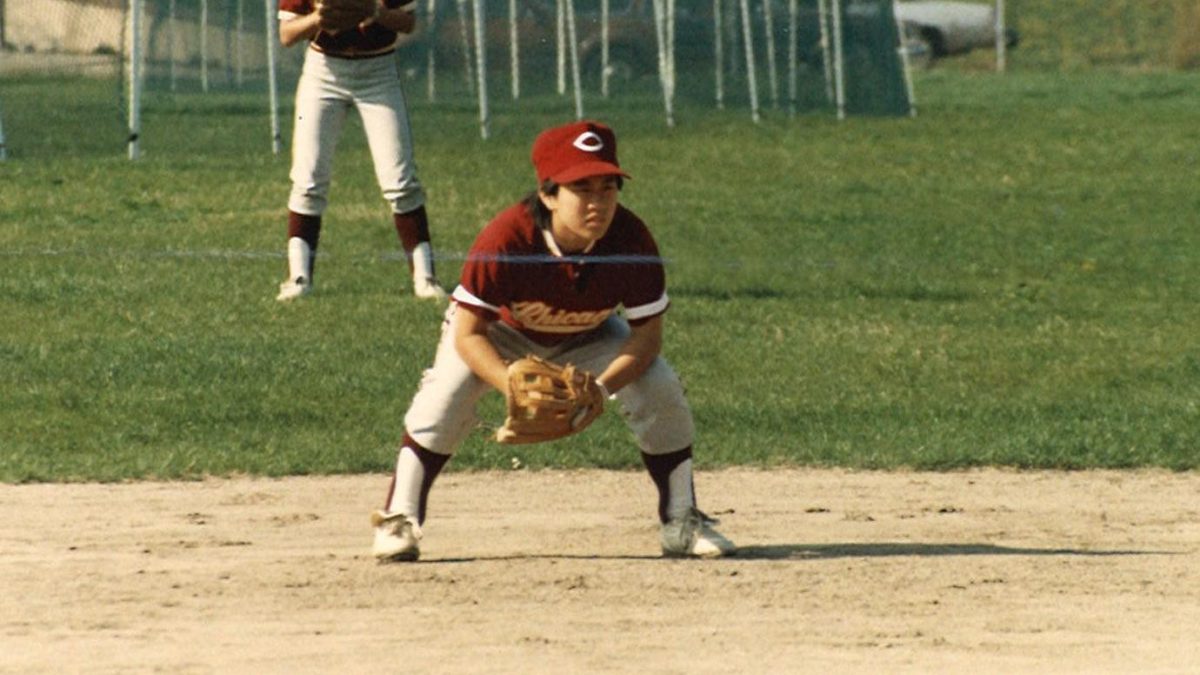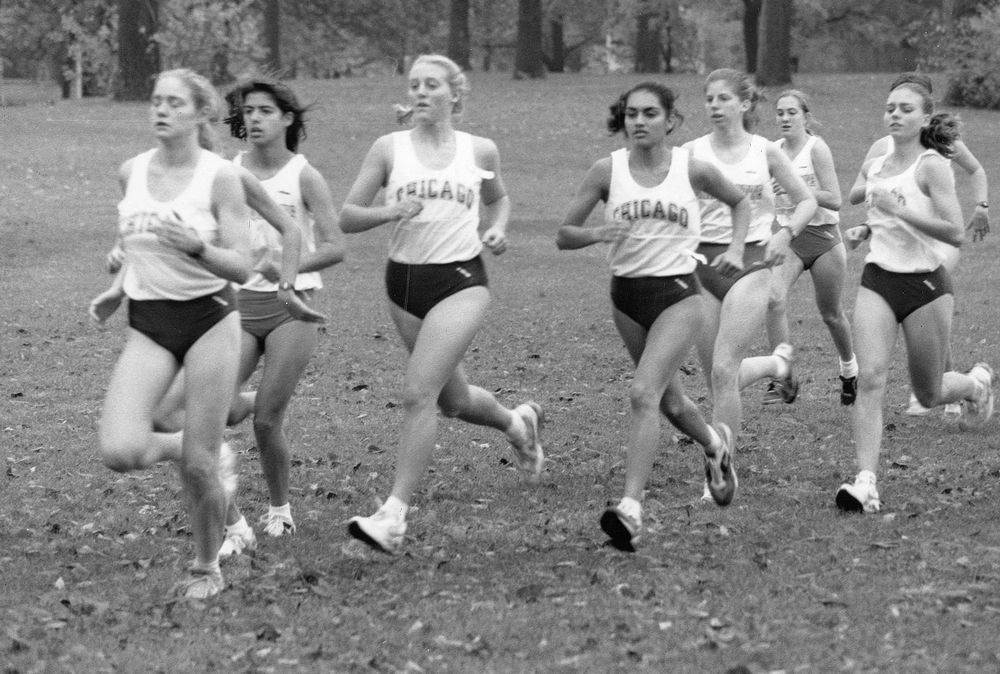For Chicago crew, dealing with the physical toll of rowing is just part of the challenge.
“Even the process of getting on and off of the water is fairly tremendous,” third-year club treasurer Judith Briant said. “It takes all the coaches, all the crewers, and a coxswain shouting directions to get the boats into the water. Then, you’ve got to bring down the launch, life jackets, gas, and lights and foghorns if it’s dark at the start of practice. It usually is.”
Despite the hardships of high fees, the burdens of running the organization on their own, and for the women, the practically unthinkable horror of six a.m. practices, the University crew club will enter its 31st season in the fall on the verge of something big. The team’s formula of taking generally inexperienced novices and honing them through tough training schedules, doughnuts, and team unity has begun to pay major dividends, with history-making finishes at two big regattas in the past two years. Reflecting back on the last season, team members agree that it’s been worth it.
“Sometimes you feel like the sport is ruining your life. Everyone gets frustrated at times,” third-year rising captain Danny Wasserman said. “But you keep coming back for your friends. I feel such loyalty to those guys. It’s painful, but it’s a bonding experience.”
While the men’s team has a slightly less terrifying schedule of afternoon practices, neither team lacks intensity out on the water. Team members are in the boats working out of the South Chicago Rowing Association facility a minimum of six days a week, and do occasional weight work on the side. The squads split their time between drilling, practice pieces on set courses to gauge time improvement, and seat races to find the fastest combinations for races. Switching seats on the river poses some risks for team members, for whom falling in would be a little unpleasant.
“We’re up by Chinatown. Rowing on our part of the river is interesting. The water is solid green, and not the pretty kind of green,” Wasserman said. “You get a lot of floating objects, more dead animals than live ones, pieces of metal flying into the river.”
Their 20-hour weekly schedules are comparable to many varsity sports, and while the club receives funding from sports club allocations and ORCSA, quarterly dues for each team member still averages around $465. As in all club sports, team members are also called upon to help administrate.
“There are a lot of little things that we need to do that varsity sports have coaches and departments to deal with, whether financial or with travel plans,” Wasserman said.
In recent years, however, their hard work and sacrifices have increasingly paid off. The team has taken several great leaps forward in the past two years. In the fall of 2003, one of the men’s boats medaled at the world-famous Head of the Charles in Boston. This spring, for the first time ever, the club had two different boats make it to the grand finals at the Dad Vail Regatta in Philadelphia May 13-14, the largest collegiate competition in the nation.
“I don’t know that the University community knows yet, but people out there know our name,” fourth-year outgoing captain Ann Marie Gawel said.
The team races four events in both the fall and spring quarters, including one each season in the sport’s northeastern hub. In recent years, the team has raced at the Head of the Charles in the autumn and at the Dad Vail in May. In the winter, the team sent Gawel and one men’s rower to the Crash-B Sprints World Indoor Championships, a Boston indoor erg race, with races conducted on rowing machines. Gawel finished 13th in the men’s/women’s lightweight division.
“It’s kind of like running a track meet on a treadmill,” she said.
Crew also had a successful regatta the first weekend of spring quarter when they traveled to Pittsburgh to face off against Carnegie Mellon, Wash U, Rochester, Emory, and Case. Despite battling rain and temperatures in the low 30s, every squad medaled at the event.
The competitive season features five-kilometer courses in the fall and two-kilometer sprints in the spring, and is primarily competitive in the four-man with-coxswain class, but also enters boats in the eight-man with-coxswain class and in pairs races. The club is limited in the latter two races by team depth and lack of equipment, as they have not yet purchased any pairs boats.
“Coaches tend to make fours ahead of eights. Some teams are deep enough to go one through eight, but we’re more likely to have four rowers at the same level,” Wasserman said.
“In the fall, we had one men’s boat at the Head of the Charles. They competed in a category with Yale, Harvard, Princeton, the U.S. and Dutch national teams, and finished three spots behind Harvard. These schools have six-figure budgets, people on waiting lists to buy them boats,” Gawel said.
However, money and resources aren’t everything in competitive rowing. The strides made by the Maroons are fitting in a sport where pure effort can make up for most shortcomings.
“The thing that’s cool about rowing is that it has more to do with working hard than being coordinated,” Wasserman said. “It’s definitely an advantage to be bigger, but our coach, who’s a lightweight woman, can row a 2-K on the machines faster than three-quarters of the men, because she practices so much. It’s much less about the natural skills.”
Team members also credit their recent leap forward to their coaching staff: men’s coach Jessica Vandevusse, varsity women’s coach Eric Mersmann, and novice women’s coach Antonio Gisbert.
“The past few years, the retention rate for the men has been way up,” third-year Min Lu said. “It’s really thanks to the great coaches.”
Unfortunately, both Mersmann and Gisbert may not be returning in the fall. If they do not stay on with the team, the club will be facing a major transitional period.
“Getting new coaches is going to be a big thing for next year,” Briant said. “The coach you have makes a big difference. It’s a task to find the right type.”
“What we pay the coaches is never enough to make up for the hours. We count on their love of the sport, and good hearts,” Wasserman said. “You have to be a little crazy to be involved with this sport.”
Looking ahead to next season, the club will be aiming to continue its run of success. In particular, after both novice teams came through with strong performances at Dad Vail, team members are hoping to put both men’s and women’s boats in medal position at the Head of the Charles for the first time.
“The Head of the Charles and Dad Vail set the national standard. When we see our team medaling, and making finals, we’re really seeing progress,” Briant said.
For more information, the team website can be found at rowing.uchicago.edu.









